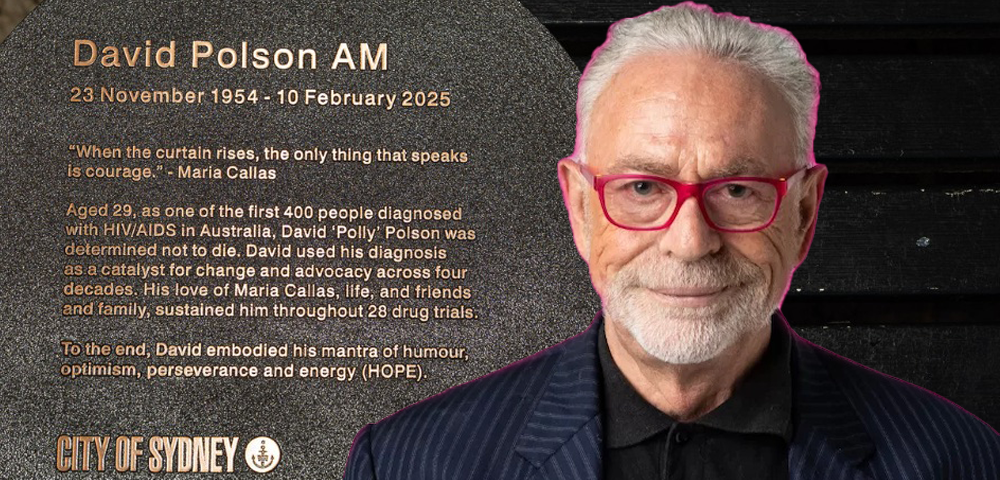
Bareback Mountain: Is This Today’s Sequel to the AIDS Epidemic?
I met a guy off the Internet again and he was over at my place and we were starting to have sex, and he asked me to fuck him without a condom, and it was fine with me because I wasn’t being fucked. I was doing it. And so we did it and then I think it was about two or three days afterwards, we got together again and that’s when he disclosed to me that he was HIV-positive, which at that time I didn’t know that I was. And maybe I wasn’t at that time, so that threw me a bit. But he kept on assuring me that, you know, I was safe because I was the top (30s, Scandinavian, HIV+).
If a partner is willing to -˜bottom’ they must already be positive or willing to take the risk. Similarly, a partner who -˜tops’ is assumed to be negative because this is considered less risky. Moreover, it is thought that a positive person would not be so irresponsible as to knowingly infect someone else. Such assumptions thrive in the silence around HIV-serostatus.
There’s nothing quite like sweaty sex on a hot August night -“ bodies grinding in spastic contortions with each other. Sounds yummy, and it ought to be. However, some have apparently forgotten common sense as they continue to navigate today’s sexual landscape.
I recently went in for my annual sexually-transmitted disease (STD) tests, and was greeted with the usual, Good day, Dr. Alderson. I was then informed that an increasing number of young men are reporting that they are neglecting to use condoms for high-risk sex when sexually involved with other young men. This was anecdotally reported to me, which means that it may simply be this one worker’s experience and therefore not represent a true behavioural trend. Nonetheless, the anecdotal report intrigued me, so I went in search for this month’s Queer Quest to find out if barebacking is on the increase. Barebacking is the colloquial term for intentional unprotected anal intercourse. Many researchers have qualified the definition in several ways, but what I was interested in were sexual interludes that would be considered high risk. If you are in a monogamous long-term trusting relationship with someone and both of you are HIV negative and devoid of other STDs, unprotected anal intercourse does not place either of you at risk for contracting HIV or any other STD. I need to emphasize the word trusting here, however, as many individuals in so-called monogamous relationships cheat on each other. I don’t want you to think I’m paranoid (well, I am a bit), but I wasn’t born yesterday either. Cheating is more common in same- and opposite-sex relationships than many people realize.
Although the actual percentage of men who have sex with men (MSM) engaging in bareback sex is unknown, estimates range from as low as 10% to 14% to as high as 45%. The greatest number of barebackers are themselves HIV‑positive.
Let me just give you the straight goods on gay sex and HIV transmission. First, the single largest group of people being infected with HIV remains MSM, according to a 2006 report by the Centre for Infectious Disease Prevention and Control, a division of the Public Health Agency of Canada. Second, the first increase since the 1980s in new infection rates among MSM in Canada occurred in 2000, and there appears to be a slight increase in 2005 compared to 2002. Third, the result of several studies from Ontario, Quebec, and British Columbia all reveal a similar trend of recent increases in the incidence of HIV among MSM. Fourth, there are increases in HIV-associated risk behaviours and/or STDs among MSM in the United States, Amsterdam, and Sydney, Australia. Now brace yourself: several different reports reveal that HIV infection rates are once again increasing in several countries, particularly among young gay men! At a 2003 conference, the Centre for Disease Control in the US reported that the number of gay and bisexual men diagnosed with HIV during 1999-2002 increased 17 percent. This increase is largely being attributed to barebacking.
It is likely that barebacking continued since the first cases of AIDS were discovered in 1981, although the numbers were considered extremely small. Now, however, this high-risk behaviour is on the increase. Barebacking was mentioned as early as 1996 in an article by Jesse Green in The New York Times Magazine, a practice he referred to as Flirting with Suicide.
Several Internet sites actually cater to those who are seeking this kind of experience. Barebacking has been attributed to the rise in popularity of using the Internet for making sexual connections. Never before since AIDS erupted onto the scene (note: before AIDS, condom-less sex was normative behaviour in the gay community) has it been possible to arrange for sexual liaisons with such a cavalier attitude toward a person’s safety. Many reasons for the rise in barebacking behaviour have been documented, including (a) Internet availability; (b) use of party drugs, particularly crystal methamphetamine (crystal meth), but also including ecstasy, GHB, and ketamine; (c) attitudes toward condom use; (d) safer sex fatigue; (e) erectile difficulties while wearing condoms; (f) identification or isolation from the gay community; (g) internalized homophobia; (h) racism; (i) inner turmoil and depression; (j) antigay violence; (k) sense of fatalism; (l) childhood sexual abuse; (m) wanting to experience greater physical stimulation; (n) wanting to feel closer emotionally to a sexual partner; (o) a desire to rebel against established norms (i.e., to do something taboo or racy); and (p) access and knowledge about the HARRT drugs themselves. Furthermore, loneliness, HIV status, unmet intimacy needs, and love are possible other contributing factors.
Men of all ages are participating in barebacking, and there is a perception by many that AIDS is not the threat that it used to be, or even that the epidemic is over. Dr. Robert Hogg, Director of the Population Health Program at the BC Centre for Excellence in HIV/AIDS, reported in 2006 that although significant increases in life expectancy have occurred since advent of the drug cocktails, or more appropriately referred to as highly active antiretroviral therapy (HAART), life for HIV-positive persons is still not as long as for people without the virus. His best educated guess, based on available data and current demographic models, was that an infected 20-year old commencing HAART will live another 30 years (this is still significantly longer than the 12 year expected life span under the earlier mono- and dual therapy drug regimes). But life expectancy for an uninfected 20-year old is 57 more years for a man and 62 more years for a woman! Dr. Hogg also reported that there is no difference between the sexes in life expectancy for those first starting HAART. I don’t mean to report this to scare you, but I’m not going to shield you from what you need to know either.
Furthermore, the HAART drug regime is not fun. Possible side effects associated with HAART include nausea, vomiting, diarrhea, skin rashes, headaches, fever, chills, depression, neurological symptoms (like tingling sensations, numbness, paralysis), and redistribution of body fat to the torso. Also, 10-30 percent of people who receive HAART fail to respond or experience viral breakthrough. For those who are already HIV-positive, barebacking places them at risk for superinfection, meaning that they may acquire another strain of the HIV virus which is resistant to HAART; they may experience rapid loss of CD4 cells; and they place themselves at risk for contracting other STDs which may lead to immune system deterioration.
There are few HIV-positive gay men who would want to infect someone because they know how onerous the disease is. However, there are some, and that will be the subject (along with harm reduction strategies) of next month’s column where I focus on the small group of individuals who want to infect others, known as gift givers, and those who want to become infected, known as bug chasers.
Sexual negotiations (i.e., the transactions we go through in initiating and engaging in a sexual opportunity) are complex phenomenon, and they occur with far too many assumptions. For example, research has shown that barebackers do not generally insist on not using condoms: however, if their partner does not have one handy, the assumption is that one is not needed or wanted. An assumption held by one Toronto participant included the belief that the partner ought to have known he was HIV-positive simply because of the building he lived in!
Furthermore, men who identify as barebackers are more likely to perceive that responsibility for safer sex rests with their partners and not themselves. That higher levels of sexual compulsivity were also found among the barebackers in [their] study may be related to this finding. In other words, barebackers do not generally have your health interests at heart! Instead, they are concerned about their own sexual gratification, and they are often impulsive in getting their needs met. Those individuals who do become HIV-positive invariably blame themselves for having done so, meaning that there are a lot of negative emotions (like guilt and shame) to work through. Guilt and shame: does that not ring a bell for the emotions many if not most of us experienced when we came out as gay or lesbian?
Don’t kid yourself: Since its first appearance in 1981, HIV infection and AIDS have reached pandemic status. As of 2004, it is estimated that 21.8 million people have died from AIDS worldwide, with 40 million living with HIV. At the end of 2005, it was estimated that 58,000 people in Canada were living with HIV infection (including AIDS). Think about it. . . and act accordingly. Your life might just be worth salvaging, but only you can do it.
Dr. Alderson is an associate professor of counselling psychology at the University of Calgary who specializes in gay and lesbian studies. He also maintains a private practice. He can be contacted by confidential email at alderson@ucalgary.ca.










